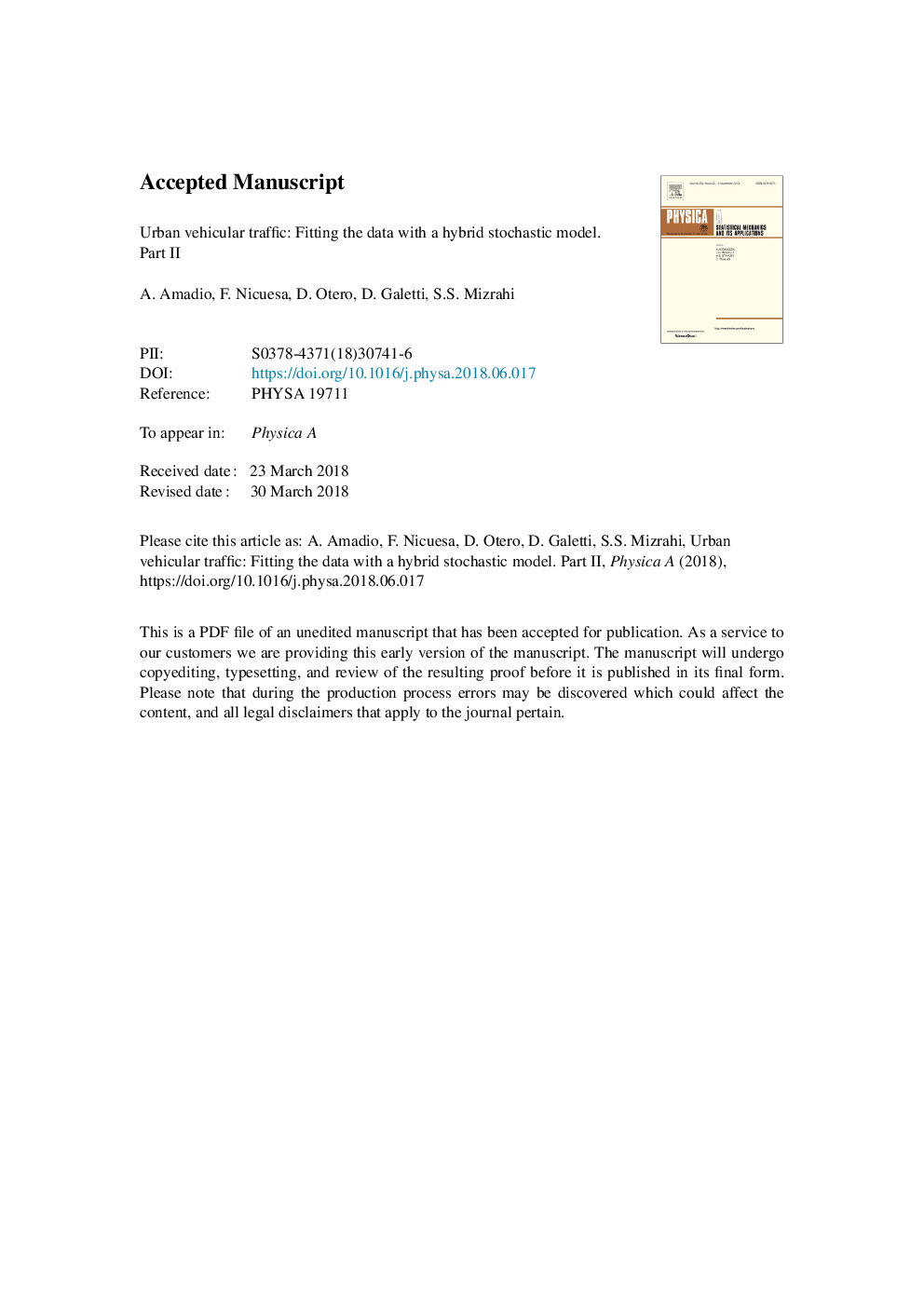| Article ID | Journal | Published Year | Pages | File Type |
|---|---|---|---|---|
| 7374766 | Physica A: Statistical Mechanics and its Applications | 2018 | 14 Pages |
Abstract
In this second part of our research we used the models presented in Modeling vehicular traffic networks. Part I (Otero et al., 2018) to perform an analysis of the urban traffic as recorded by cameras distributed in a chosen sector of Tigre, a city localized in the province of Buenos Aires, Argentina. We found that the circulation of vehicles - the traffic dynamics -, along a whole day, can be described by a hybrid model that is an adapted blend of model 2, for an open linear system, with model 3, which is nonlinear, developed in Part I. The objectives of this work were, firstly, to verify whether the vehicular flux can be modeled as an n-step stochastic process for its evolution, n for the time. Secondly, to find out if the model, with its parameters fixed to describe the traffic of a single day, may adequately describe the traffic in other days. Thirdly, to propose changes in the already established set of the urban traffic rules in order to optimize the vehicular flow and to diminish the average time that a vehicle stays idle at the semaphores. We estimate that the goals were achieved satisfactorily within the margins of the experimental errors of the collected data.
Related Topics
Physical Sciences and Engineering
Mathematics
Mathematical Physics
Authors
A. Amadio, F. Nicuesa, D. Otero, D. Galetti, S.S. Mizrahi,
